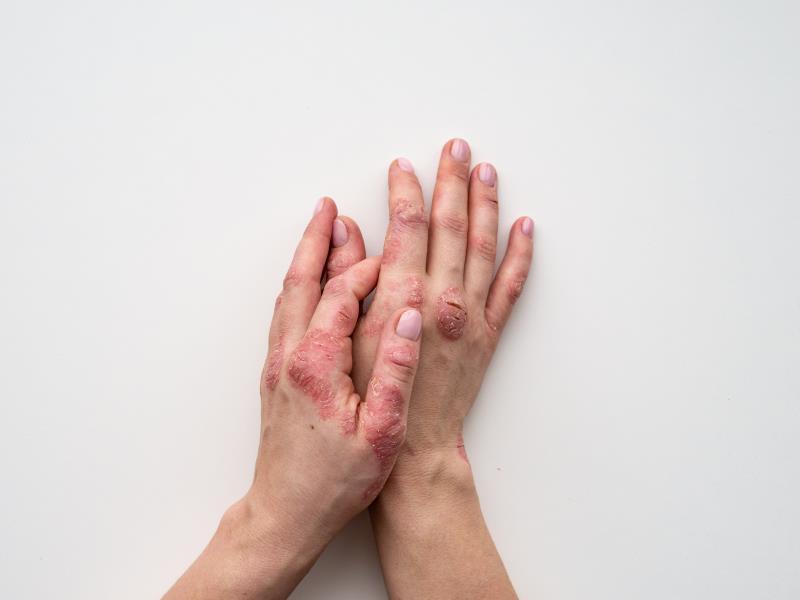Netakimab improves treatment outcomes in PsA





The anti-interleukin 17A antibody netakimab reduces disease activity and skin manifestations in patients with active psoriatic arthritis (PsA), consequently improving patient-reported outcomes (PROs), analyses of the phase III PATERA trial have shown.
A total of 194 participants with inadequate response to conventional synthetic DMARDs* or a tumour necrosis factor inhibitor were randomized 1:1 to receive SC netakimab 120 mg or placebo. Placebo recipients who did not meet ACR20 by week 16 (n=84) were switched to netakimab 120 mg. Week 24 results are reported.
Better responses
Compared with placebo, more netakimab recipients achieved ACR20/50** responses (82/70 percent vs 9/6 percent), Psoriatic Arthritis Response Criteria (87 percent vs 29 percent), and minimal disease activity (42 percent vs 1 percent; p<0.0001 for all), as well as remission as per Disease Activity Index for PsA (36 percent vs 13 percent; p=0.003) [EULAR 2020, abstract OP0226]
The rates of grade 3/4 treatment-related adverse events (TRAEs) were low in both netakimab and placebo arms (1 percent vs 2 percent), and most were mild-to-moderate in severity. There were no serious TRAEs reported.
“[These findings suggest that] netakimab is well-tolerated [and] provided sustained improvements in the signs and symptoms of active PsA through 24 weeks of therapy,” said the researchers.
Improved skin manifestations
A greater fraction of netakimab vs placebo recipients also achieved PASI75/90/100*** responses (83/68/49 percent vs 11/7/7 percent; p<0.0001 for all). [EULAR 2020, abstract AB0791]
In terms of percentage change in PASI total score from baseline, the substantial difference between netakimab vs placebo was evident at week 4 (–61 percent vs –9 percent), which remained significant until week 24 (–88 percent vs –4 percent; p<0.0001 for both).
“[These data imply that] netakimab resulted in significant improvements in skin manifestations in PsA patients, [with nearly] half achieving complete skin clearance,” said the researchers.
Better PROs
Quality of life (QoL) improvements also favoured netakimab over placebo, as shown by the improvements in QoL domains such as mobility (81 percent vs 47 percent), self-care (57 percent vs 28 percent), usual activities (62 percent vs 38 percent), and pain/discomfort (74 percent vs 38 percent) with the former vs the latter. [EULAR 2020, abstract AB0792]
Netakimab use also led to greater changes in HAQ-DI# (mean, –0.6 vs –0.1) and Dermatology QoL Index (mean, –11.4 vs –1.8; p<0.0001 for both), as well as better Work Productivity and Activity Impairment responses (mean, –22 percent vs –1 percent [presenteeism], –19 percent vs –0.6 percent [overall work impairment], and –26 percent vs –5 percent [activity impairment]) compared with placebo.
Axial disease
In a subset of patients with axial disease (n=104), netakimab vs placebo led to greater reductions in mean BASDAI## (–3 vs –0.19) and ASDAS-CRP### scores (–2 vs –0.11; p<0.0001 for both), as well as spinal (–2 vs –0.16) and nocturnal pain (–2 vs –0.20). [EULAR 2020, abstract FRI0346]
These data support the efficacy of netakimab even in the presence of axial involvement, which may heighten the impaired treatment outcomes and QoL in this setting, said the researchers.